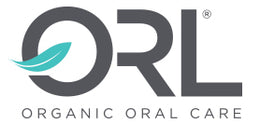Once thought of as a safe and natural treatment for dingy and discolored teeth, charcoal toothpaste is now making headlines for a very different reason—potentially causing irreversible enamel damage. Rest assured, charcoal has never been in anything ORL makes, but as a company that offers evidence-based natural oral health care products, we understand that you may have questions about charcoal toothpaste and how to protect your smile. We’ll give you a full breakdown with science-backed answers below.
1. Are charcoal toothpastes effective?
The Journal of the American Dental Association (JADA) concludes there is insufficient data to indicate charcoal toothpastes are effective. The organization pulled 118 different studies in 2017 looking for proof that commonly sold charcoal dentifrices had therapeutic benefits, such as antibacterial, antifungal, antiviral, and oral detoxification.
When the claims couldn’t be substantiated, the agency urged clinicians to “advise their patients to be cautious when using charcoal and charcoal-based dentifrices…”
2. Can charcoal toothpaste whiten teeth?
Even though 96 percent of charcoal toothpastes claim to be able to whiten teeth, there hasn’t been much research in the area. A 2019 study notes it’s likely to be the first to evaluate it and stacked it up against other teeth whitening agents. While this singular study did find that there was some whitening benefit to charcoal, it was statistically less helpful than most other agents tested. Additional studies would need to be conducted and achieve the same result for the findings to be reliable.
3. Are charcoal toothpastes safe?
Experts have serious concerns about the safety of charcoal. To quote the 2019 study, “possible early and excessive wear of dental enamel is a matter of concern, especially when whitening toothpastes are used by children or individuals with acid erosion and/or abfraction lesions.”
They may not be the only ones at risk though. Dr. John Brooks, a clinical professor in the Department of Oncology and Diagnostic Sciences at the University of Maryland School of Dentistry, who led the initial study says he’s concerned any whitening benefit may actually come from charcoal removing some enamel. That will not only make teeth look yellower because the dentinal layer shows through more, but makes teeth more susceptible to decay too.
Brooks followed up with a study on charcoal mouthwashes in 2020. After viewing charcoal particles with electron microscopy, he described them as sharp or like “rinsing your mouth with rocks.”
In addition to this, Brooks’ team says charcoal contains at least four hydrocarbons the U.S. government recognizes as likely carcinogens.
4. Is charcoal toothpaste good for your teeth?
Current research suggests charcoal toothpaste is not good for teeth or gums. As demonstrated in the studies above, it’s incredibly abrasive and likely removes enamel. Researchers also note that charcoal particles are rather large and can potentially get lodged in the margins of fillings, potentially resulting in decay and/or discoloration, as well as at the gumline, causing irritation.
5. What are some alternatives to charcoal toothpaste?
There are lots of alternatives to charcoal toothpaste! However, if you’re looking for whitening ability, it’s important to note that there are two primary types of staining. There are the surface-level stains that are part of the biofilm that collects on your teeth and there are deeper discolorations.
Treatment for Deep Teeth Stains
Dentists typically address deeper discolorations with specialized whitening treatments that open up the “pores” on teeth, known as dentinal tubules, and then oxidize stains from the inside out with peroxide or a similar substance. Methods like this are the only safe and proven way to eliminate deep stains. If you suspect that’s what you’re experiencing, connect with your dentist on potential treatments.
Treatment for Surface Stains
Your teeth develop a bacterial film, also known as a biofilm, between cleanings. In the early stages, it’s sticky and can attract stains like a magnet. Thankfully, it’s generally easy to remove through brushing and flossing. Certain substances, like xylitol, have been shown to inhibit the development of biofilm too. As it sits, it hardens into tartar, also known as calculus, which can only be removed by a dental professional.
With that in mind, most at-home whitening agents work by disrupting the biofilm layer or are abrasive enough to power through residue left on teeth. The latter comes with a word of caution because, as seen above, abrasiveness can also damage teeth. Another group of “whiteners” don’t really whiten, but instead perform an optical illusion of sorts. They contain a blue pigment which, when paired with yellow tooth discolorations, can give the impression that teeth are whiter than they really are.
Brighten Your Smile Naturally with ORL
We didn’t set out to make “whitening” toothpastes or mouthwashes at ORL. Our goal was to create formulas with a 7.0 pH. That’s important because bacteria thrive in an acidic environment and teeth demineralize too. When balance is restored, the bad bacteria responsible for decay and bad breath struggles to take hold. Teeth can naturally remineralize too. (You can read more about the science of oral pH here.) Our goal was to promote balance and health, so pH was the best place to start.
From there, we layered in natural ingredients like organic xylitol, which as demonstrated earlier, kills bacteria and inhibits biofilm. Plant-based essential oils with proven antibacterial and antifungal properties, as well as a variety of fortifying vitamins and minerals are also included.
After we launched, however, people began reporting that ORL was whitening their teeth. It wasn’t a claim we made or something we set out to do but it makes perfect sense. Focus on health and banishing biofilm, and brighter smiles are bound to happen.



